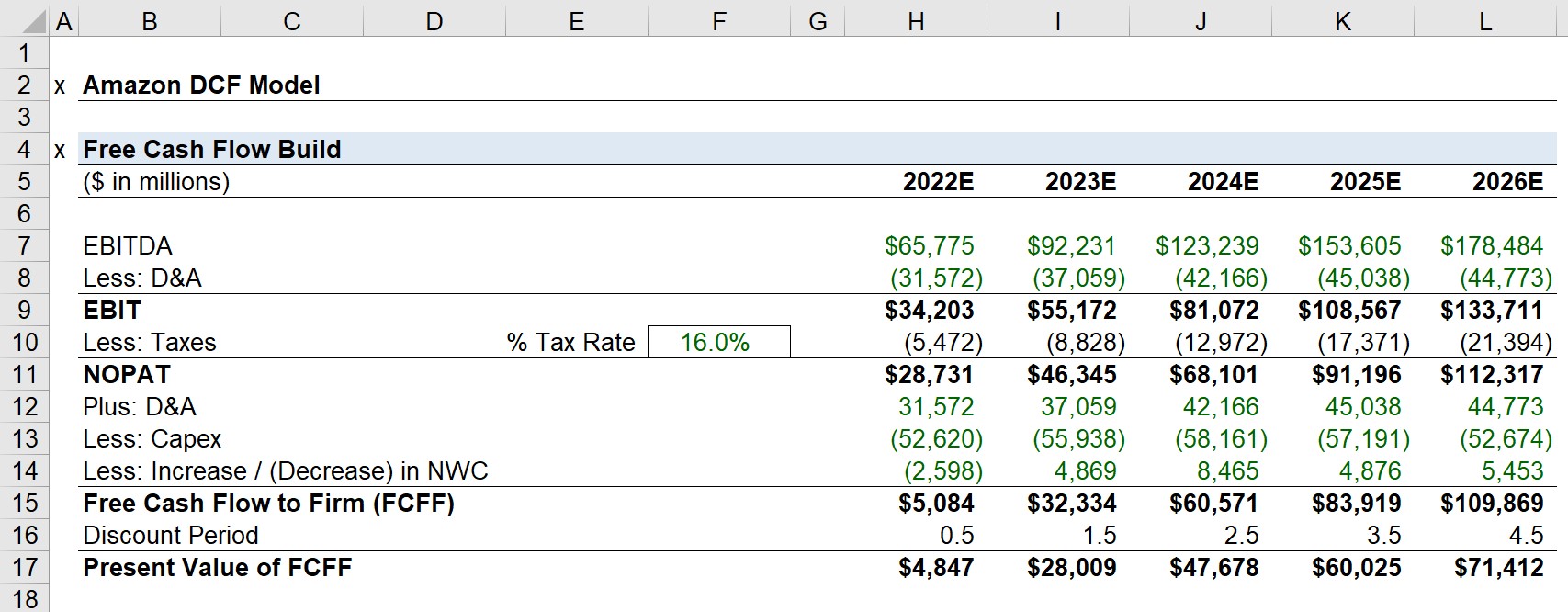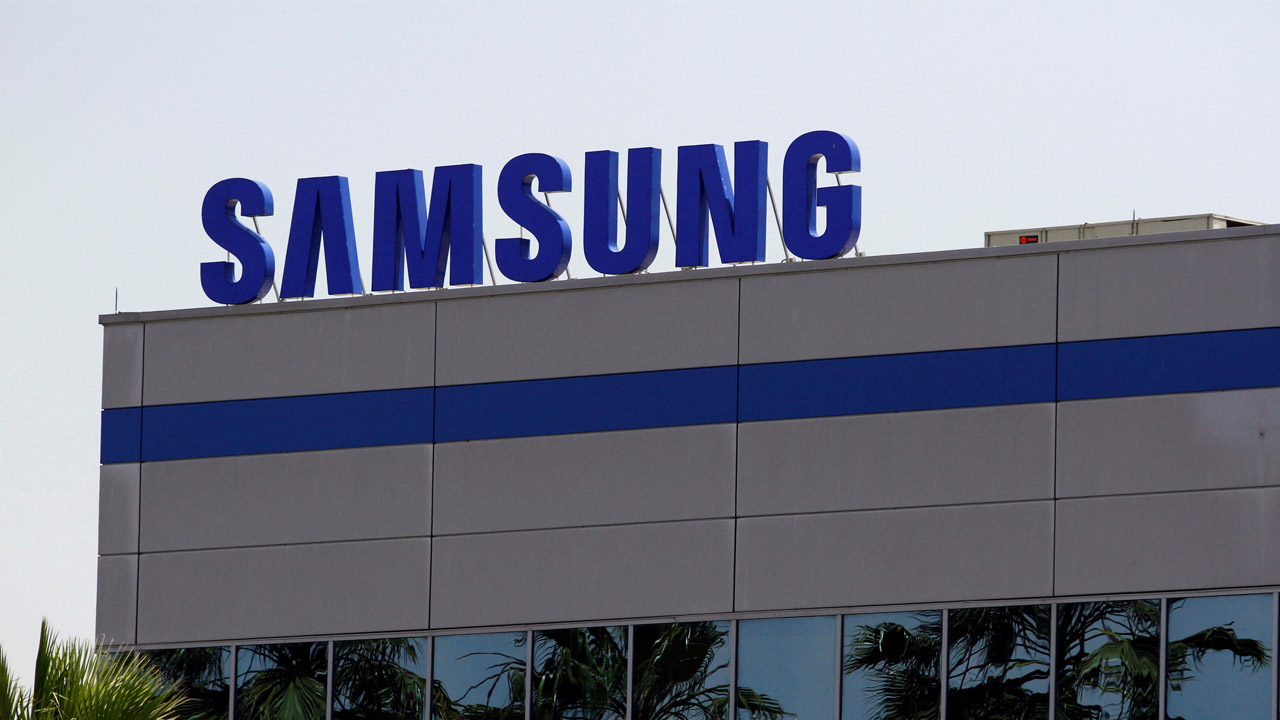

Finance
What Is Amazon’s Capital Structure?
Published: December 25, 2023
Learn about Amazon's capital structure and how it impacts their financial operations. Explore the key elements of their financing strategy and understand the importance of finance in their business model.
(Many of the links in this article redirect to a specific reviewed product. Your purchase of these products through affiliate links helps to generate commission for LiveWell, at no extra cost. Learn more)
Table of Contents
Introduction
When it comes to running a successful business, having the right capital structure is crucial. It determines how a company finances its operations, growth, and investments. One company that has become a global powerhouse with its unique capital structure is Amazon.
Amazon, founded by Jeff Bezos in 1994, started as an online bookstore but quickly expanded to include a wide range of products and services. It has grown exponentially over the years and transformed into one of the largest e-commerce companies in the world. As Amazon’s business diversified, so did its capital structure.
Capital structure refers to the mix of debt and equity a company uses to finance its operations. Debt represents borrowed funds that need to be repaid, while equity represents ownership in the company. Both components play a significant role in shaping Amazon’s financial strategy and determining its overall risk profile.
Understanding Amazon’s capital structure is essential for investors and analysts to assess the financial health of the company and make informed decisions. Let’s delve deeper into the debt and equity components of Amazon’s capital structure and explore the factors that influence it.
Please note that the information provided in this article is based on the available public information and may not reflect the most current capital structure of Amazon.
Debt in Amazon’s Capital Structure
Debt is a crucial component of Amazon’s capital structure, allowing the company to fund its operations, finance acquisitions, and invest in new ventures. Amazon utilizes both short-term and long-term debt to meet its financial needs.
Amazon issues bonds to raise capital, which are debt securities that promise to pay periodic interest and return the principal amount at maturity. These bonds are typically rated, indicating the creditworthiness of Amazon and the perceived risk associated with the investment. The interest rates on these bonds depend on market conditions and Amazon’s credit rating.
In recent years, Amazon’s debt levels have risen significantly as the company continues to expand and diversify its business. The company has used debt strategically to fund acquisitions, such as the acquisition of Whole Foods Market and the video game streaming platform Twitch. By leveraging debt, Amazon has been able to access additional capital without diluting existing shareholders’ ownership.
Amazon’s debt obligations are carefully managed to maintain its financial flexibility. The company strives to optimize its debt structure by maintaining a balance between long-term and short-term debt. This approach ensures that Amazon has access to capital when needed while minimizing refinancing risk.
It is important to note that debt carries some degree of risk. Amazon’s ability to generate sufficient cash flows to service its debt obligations is critical. Factors such as changes in interest rates, economic conditions, and the competitive landscape can impact Amazon’s ability to meet its debt obligations. Therefore, it is essential for the company to manage its debt levels prudently to maintain financial stability.
Overall, debt plays a significant role in Amazon’s capital structure, providing the company with the necessary funds to fuel its growth and strategic initiatives. By carefully managing its debt and balancing its repayment obligations, Amazon aims to maintain its financial strength and continue its trajectory as a global leader in e-commerce and technology.
Equity in Amazon’s Capital Structure
Equity represents the ownership interest in a company and is another key component of Amazon’s capital structure. Amazon has been successful in raising equity capital through various means to support its growth and expansion.
The primary source of equity for Amazon is the issuance of common stock. Common stock represents ownership in the company and provides shareholders with certain rights, such as voting rights and a share of the company’s profits through dividends. Amazon has been able to attract investors due to its impressive performance and the potential for future growth.
Amazon has also utilized stock-based compensation to attract and retain talented employees. Stock options and restricted stock units (RSUs) are common forms of equity-based compensation that allow employees to benefit from the company’s success. This aligns the interests of employees with shareholders, encouraging them to work towards the long-term success of Amazon.
In addition to common stock and stock-based compensation, Amazon has also engaged in secondary offerings in the past. Secondary offerings involve the sale of existing shares by insiders or major shareholders, offering an opportunity for these stakeholders to monetize their holdings. This enables Amazon to raise additional equity capital without diluting the ownership stakes of existing shareholders.
Amazon’s strong financial performance and promising growth prospects have attracted a wide range of institutional investors, including mutual funds, pension funds, and hedge funds. These investors often hold significant positions in Amazon’s equity, contributing to the stability and liquidity of the company’s stock.
Equity in Amazon’s capital structure provides the company with a stable source of capital that does not require regular interest payments or principal repayment. However, equity also involves giving up ownership and sharing profits with shareholders. The value of equity is subject to market fluctuations, influenced by factors such as market sentiment, company performance, and industry dynamics.
Overall, equity plays a crucial role in Amazon’s capital structure, providing the company with the necessary funds to support its operations, expansion, and strategic initiatives. By consistently delivering strong financial results and maintaining investor confidence, Amazon continues to attract equity investments and maintain its position as one of the world’s most valuable companies.
Weighted Average Cost of Capital (WACC)
The weighted average cost of capital (WACC) is a financial metric used to determine the overall cost of financing for a company. It takes into account the cost of both debt and equity in a company’s capital structure, weighted by their respective proportions.
For Amazon, calculating the WACC provides insights into the cost of capital required to fund its operations and investments. A lower WACC indicates a lower cost of capital and increases the company’s financial flexibility.
The WACC is calculated by multiplying the cost of debt by the weight of debt in the capital structure, adding it to the cost of equity multiplied by the weight of equity:
WACC = (Cost of Debt x Weight of Debt) + (Cost of Equity x Weight of Equity)
The cost of debt is determined by the interest rates on Amazon’s outstanding debt and the risk associated with servicing that debt. The cost of equity, on the other hand, represents the return expected by investors for bearing the risk of investing in Amazon’s stock.
Both the cost of debt and the cost of equity are influenced by various factors, including interest rate fluctuations, market conditions, industry risks, and the financial performance of the company. As Amazon’s financial position and creditworthiness improve, it may be able to access debt financing at lower interest rates, reducing its overall WACC.
The weights assigned to debt and equity in the WACC calculation are determined by the proportion of each in Amazon’s capital structure. As Amazon’s debt levels increase or decrease, the weight of debt in the WACC formula will change accordingly. Similarly, any changes in the number of outstanding shares or the value of equity will affect the weight of equity in the calculation.
By carefully managing its capital structure and optimizing its WACC, Amazon can achieve a balance between debt and equity financing to reduce its overall cost of capital. A lower WACC allows the company to undertake projects with a positive net present value, enhancing shareholder value.
It is important to note that the WACC is subject to change over time as Amazon’s capital structure evolves and market conditions fluctuate. Therefore, consistent monitoring and analysis of the WACC are essential to make informed financial decisions and evaluate the company’s financial health.
In summary, the weighted average cost of capital (WACC) is a crucial metric for Amazon as it provides a measure of the company’s overall cost of financing. By managing its capital structure effectively and minimizing the WACC, Amazon can enhance its financial flexibility and support its strategic initiatives and growth objectives.
Factors Influencing Amazon’s Capital Structure
Amazon’s capital structure is influenced by a variety of factors that impact its financing decisions and the mix of debt and equity in the company’s financial structure. Understanding these factors is crucial to gaining insights into Amazon’s financial strategy and its ability to manage its capital effectively.
- Financial Performance: Amazon’s financial performance plays a significant role in shaping its capital structure. As the company generates robust earnings and demonstrates sustainable growth, it becomes more attractive to lenders and investors, allowing Amazon to access debt and equity financing on favorable terms.
- Market Conditions: The state of the financial markets, interest rates, and investor sentiment have a direct impact on Amazon’s capital structure. Favorable market conditions, such as low interest rates and high investor appetite for tech companies, may incentivize Amazon to raise more debt or issue equity to take advantage of these favorable financing conditions.
- Growth Opportunities: Amazon’s capital structure is influenced by its growth strategy and expansion plans. When pursuing new ventures, acquisitions, or entering emerging markets, the company may seek additional capital through debt or equity to fund these growth opportunities and fuel its expansion.
- Risk Management: Amazon carefully manages risk in its capital structure. It assesses the impact of debt on its financial flexibility, refinancing risk, and the ability to generate sufficient cash flows to meet its debt obligations. The company balances its debt and equity to mitigate risk and maintain financial stability.
- Tax Considerations: Tax considerations can influence Amazon’s capital structure decisions. Debt financing allows the company to deduct interest expense from taxable income, thereby reducing its tax obligations. By optimizing its capital structure, Amazon aims to maximize its tax efficiency and minimize its overall tax burden.
- Investor Preferences: The preferences and expectations of investors also shape Amazon’s capital structure. Institutional investors, such as pension funds and mutual funds, may have specific requirements or limitations on the type and proportion of debt or equity investments they can make. Amazon takes these preferences into account when determining its capital structure.
It’s essential to note that Amazon’s capital structure is not fixed and may change over time. The company continually evaluates these factors to ensure its capital structure aligns with its overall strategic objectives and financial goals.
By considering these factors and making informed decisions about its capital structure, Amazon aims to optimize its financing costs, maintain financial stability, and support its long-term growth and success as a global leader in e-commerce and technology.
Conclusion
In conclusion, Amazon’s capital structure plays a crucial role in its financial strategy and ability to support its operations, investments, and growth. The company utilizes both debt and equity to fund its initiatives, balancing its financing sources to maintain stability and optimize its cost of capital.
Debt is an important component of Amazon’s capital structure, allowing the company to access additional capital without diluting existing shareholders’ ownership. By strategically managing its debt levels and optimizing its debt structure, Amazon can support growth and acquisitions while maintaining financial flexibility.
Equity also plays a significant role in Amazon’s capital structure, providing the company with a stable source of capital. By attracting institutional investors and leveraging stock-based compensation to attract and retain talent, Amazon has been able to finance its operations and expansion successfully.
The weighted average cost of capital (WACC) is a metric that gauges Amazon’s overall cost of financing. By carefully managing its WACC, Amazon aims to minimize its cost of capital, enhance its financial flexibility, and create value for its shareholders.
Several factors influence Amazon’s capital structure, including its financial performance, market conditions, growth opportunities, risk management considerations, tax considerations, and investor preferences. By considering these factors, Amazon makes informed decisions about its capital structure to align with its strategic objectives and financial goals.
Overall, Amazon’s capital structure is designed to support its mission of customer-centricity, innovation, and long-term growth. As the company continues to evolve and expand its operations, its capital structure will adapt accordingly to support its continued success in the dynamic world of e-commerce and technology.














